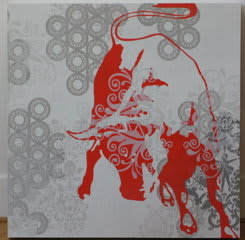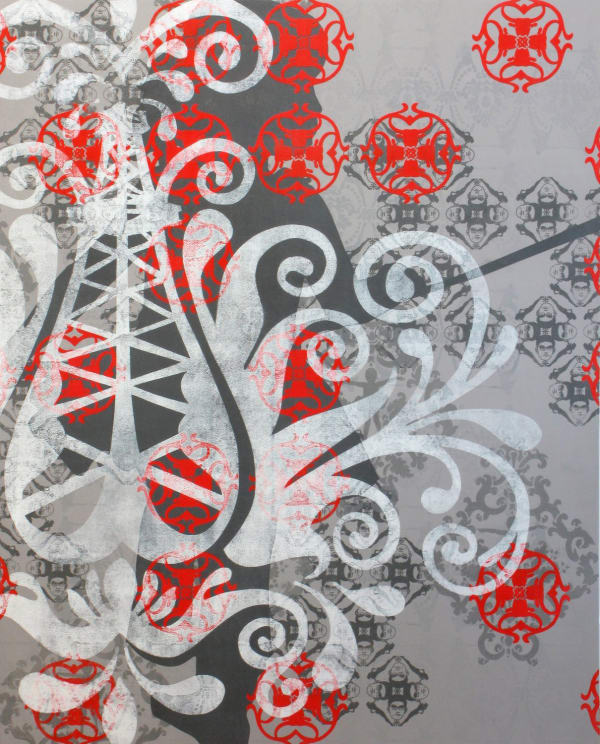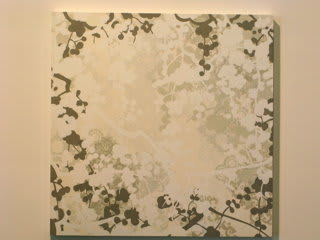Julie W. Chang: Ox-Herding
In ten paintings on panel, Julie Chang interprets the early Buddhist “Ox-Herding Pictures” describing the path to enlightenment. While the first depictions can be traced to the 12th Century Chinese Zen master Kuoan Shiyuan, Chang’s translation is rooted in her experience as a first generation Chinese-American growing up in Orange County, California.
Recycled imagery — from old family photos, textile design, pop culture, even the logo on Chinese take-out bags — forms the basis for much of Chang’s work. She creates patterns by combining decorative Chinese flourishes with early 20th-century European wallpaper design, which are then imbedded with images of significance from her life — images that, imprinted in memory, have contributed to the formation of her identity. These include oil derricks and palm trees from her Southern Californian upbringing, the stern face of her father, silhouettes of herself from childhood photos, Asian strippers, and engagement rings.
Intertwined within these patterns, the metaphors of the ox-herding story appear. A child progresses through ten stages, beginning with the search for the ox, which represents the true, essential self, and culminating in transcendence of the self in the recognition of the unity and inherent perfection of all things. For Chang, taking on the challenge of exemplifying these stages reflects a shift in her artistic practice from a focus on the past toward an integration of self-knowledge in the present. Paradoxically, while the ox-herd eventually loses himself in the path to enlightenment, Chang has in fact discovered more of herself in deciphering the process.
Julie Chang received her MFA from Stanford in 2007 and is currently an artist in residence at the Headlands Center for the Arts in Sausalito, CA.
-

-

-

-
 Julie W. ChangSeizing, 2008acrylic on panel36 x 36 inches
Julie W. ChangSeizing, 2008acrylic on panel36 x 36 inches
91.4 x 91.4 cms -

-
 Julie W. ChangRiding Home, 2008acrylic on panel36 x 30 inches
Julie W. ChangRiding Home, 2008acrylic on panel36 x 30 inches
91.4 x 76.2 cms -

-
 Julie W. ChangBoth Forgotten, 2008acrylic on panel77 x 66 inches
Julie W. ChangBoth Forgotten, 2008acrylic on panel77 x 66 inches
195.6 x 167.6 cms -
 Julie W. ChangReaching the Source, 2008acrylic on panel48 x 48 inches
Julie W. ChangReaching the Source, 2008acrylic on panel48 x 48 inches
121.9 x 121.9 cms











